An extended wait for college football's national championship game also pushed back the deadline for underclassmen to declare for the NFL draft. But decision day has come and gone for top college players, so let's dive in.
Friday marked the deadline for underclassmen to enter the draft, to be held April 23-25 in Las Vegas. College coaches know who is staying or going. Although the NCAA transfer portal remains active, most recruiting classes are signed and rosters can take shape for the 2020 season.
This list examines teams breathing a sigh of relief after the draft deadline and others that are cringing. I not only account for how many underclassmen certain teams are losing, but also whether those decisions were obvious or surprising. Teams that lose large groups of players with strong draft grades aren't automatic losers. Some teams fall in the middle, like Ohio State, Auburn, Penn State and Mississippi State did this year.
Here's the breakdown.
Winners
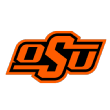
Oklahoma State: It's a good time to be a Cowboy fan after OSU retained its top two offensive players for the 2020 season. Wide receiver Tylan Wallace, a Biletnikoff Award finalist in 2018 who tore his ACL during a late October practice, announced on New Year's Day that he would be back. Although his decision isn't a surprise, he gives Oklahoma State an established target with 139 receptions, 20 touchdowns and 2,394 receiving yards the past two seasons. The real stunner came when Chuba Hubbard, the Big 12 Offensive Player of the Year, also decided to return. Hubbard had been Mel Kiper's No. 5 draft-eligible running back and led the nation in both rushing yards (2,094) and carries (328). Oklahoma State returns arguably the nation's top triple threat in Hubbard, Wallace and sophomore quarterback Spencer Sanders.
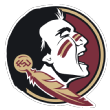
Florida State: After a nice recruiting push in December, new Seminoles coach Mike Norvell received two more boosts to the roster. The big retention is defensive tackle Marvin Wilson, who was No. 25 on Kiper's Big Board. Wilson had a team-high five sacks and 8.5 tackles for loss before suffering a season-ending hand injury in November. He will be an Outland Trophy candidate in the fall. Wide receiver Tamorrion Terry also is back after leading the Seminoles with 1,188 receiving yards and nine touchdowns in 2019. Although FSU not surprisingly loses running back Cam Akers and cornerback Stanford Samuels III to draft declarations, it should feel great about keeping Wilson and Terry.

Clemson: Regardless of the national title game result, Clemson projected as the country's No. 1 team entering the 2020 season. The Tigers' position only became stronger after the draft deadline. Running back Travis Etienne shocked many when he announced his return. Etienne, whom Kiper ranked No. 4 among draft-eligible running backs, will be part of the nation's most talented offensive backfield with quarterback Trevor Lawrence. Linebacker Isaiah Simmons (No. 6 on the Big Board) and wide receiver Tee Higgins (No. 19) were obvious departures. The Tigers also will miss cornerback A.J. Terrell (No. 9 in Kiper's position rankings). But the deadline doesn't hit Clemson nearly as hard as other annual College Football Playoff contenders.

Oregon: Last Monday was a good day in Eugene, as four draft-eligible Ducks defenders chose to return. Although none of the four projected as an extremely high pick, cornerbacks Thomas Graham Jr. and Deommodore Lenoir are proven players who will help fortify the Pac-12's best defense in 2020. A unit with young stars like end Kayvon Thibodeaux and safeties Jevon Holland and Verone McKinley III will propel the defending Pac-12 champions. Running back CJ Verdell's return also isn't a surprise, but he gives the Ducks a back-to-back 1,000-yard rusher who has logged 399 carries the past two seasons.
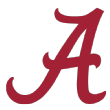
Alabama: I initially had Alabama in the middle category, as the Tide still lose five underclassmen, including quarterback Tua Tagovailoa and wide receiver Jerry Jeudy. But the number of departures easily could have been bigger. Offensive tackle Alex Leatherwood, whom Kiper ranks No. 21 overall and ahead of departing teammate Jedrick Wills Jr., will return to anchor the line. Leatherwood again will block for Najee Harris, who somewhat quietly rushed for 1,224 yards and 13 touchdowns as a junior. Alabama also retains leading receiver DeVonta Smith (1,256 yards). The most impactful returnee could be linebacker Dylan Moses, a national awards candidate who missed the season with a knee injury.

Stanford: The draft deadline provided some much-needed good news for Stanford, which went 4-8 in 2019 and had more than a dozen players enter the transfer portal. But the Cardinal return several talented players for 2020, including Paulson Adebo, Kiper's No. 14 overall prospect and No. 2 draft-eligible cornerback. Adebo is a two-time All-Pac-12 selection who will enter 2020 as a national awards candidate. Stanford also regains offensive tackle Walker Little, who opened this past season as a projected top-10 pick but suffered a knee injury in the opener and did not return. Tight end Colby Parkinson (No. 8 on Kiper's list) will depart The Farm.

Texas: The Longhorns end up in the winners section for the second straight year, which could be good or bad. Although Texas should benefit from the return of quarterback Sam Ehlinger, offensive tackle Samuel Cosmi and others, the absence of early entries suggests upgrades are needed in both talent and development, especially after a disappointing 2019 season. Ehlinger seemed like an obvious choice to stay, especially after some second-half struggles this fall, but Cosmi ranked as Kiper's seventh draft-eligible tackle.

USC: Like Texas, USC might have mixed feelings about ending up here. The best Trojans teams, like the best Longhorns teams, sent groups of underclassmen to the NFL draft. But coach Clay Helton will benefit from the return of wide receiver Tyler Vaughns, defensive tackle Jay Tufele and others before another win-or-else season in 2020. Vaughns and Amon-Ra St. Brown will form one of the nation's best receiver tandems, and Tufele should be a force inside for USC's new defensive coordinator. Offensive tackle Austin Jackson departs, but USC should have one of the Pac-12's most talented rosters.
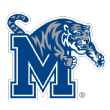
Memphis: After a historic run to the Cotton Bowl in 2019, Memphis will enter 2020 as one of the leading candidates to represent the Group of 5 again in a New Year's Six bowl. Quarterback Brady White is returning for a sixth college season and will enter his third year at the helm of a big-play offense. An even bigger roster retention could be Damonte Coxie, who led Memphis with 1,276 receiving yards and nine touchdowns in 2019. Add in dynamic running back Kenneth Gainwell, and Memphis should continue to pile up points under new coach Ryan Silverfield.
Losers
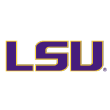
LSU: The Tigers will gladly take the L here. Thing is, LSU almost always loses a large group of underclassmen to the draft. Since 2012, the Tigers lead the FBS with 44 early entries. The difference this year is that LSU turned all that talent into a national title, its first since 2007, and a record-setting offense. But having nine underclassmen depart to the draft stings, even if there are some obvious exits like safety Grant Delpit (No. 10 on Kiper's Big Board), Justin Jefferson (No. 7 among wideouts) and Lloyd Cushenberry III (No. 6 among centers). The returns of safety JaCoby Stevens and nose tackle Tyler Shelvin help, but there's no minimizing the impact of the group LSU loses.
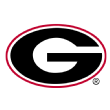
Georgia: Here's another team that the draft deadline hit hard on one side of the ball, as five Georgia offensive players opted to declare. Offensive tackle Andrew Thomas and running back D'Andre Swift were obvious departures -- Kiper ranks both No. 1 at their respective positions. But Jake Fromm, a three-year starter, could have returned, especially in a year with a strong quarterback class. Isaiah Wilson doesn't rank among Kiper's top 10 offensive tackle prospects, and guard Solomon Kindley isn't ranked. Georgia could have the nation's best defense in 2020, as linebacker Monty Rice and others return, but the departures add to the uncertainty on offense.
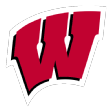
Wisconsin: The Badgers are here not because their draft departures are shocking but because this is a program that can't afford too many early entrants, especially on one side of the ball. Wisconsin loses two national award winners: Jonathan Taylor (Doak Walker) and Tyler Biadasz (Rimington). Kiper pegs Taylor as the No. 23 overall prospect and No. 2 running back, and Biadasz as the top draft-eligible center. The more surprising exit is top wide receiver Quintez Cephus, who led Wisconsin with 59 receptions for 901 yards and seven touchdowns. No other returning receiver had more than 23 catches in 2019.

Iowa: Consecutive years in this section isn't all bad for Iowa, which always produces NFL players but is fast-tracking more underclassmen to the league. Two of the four departures are no-brainers, as defensive end A.J. Epenesa and offensive tackle Tristan Wirfs rank 15th and 20th on Kiper's Big Board and could be drafted even higher in April. Iowa's other two departures, safety Geno Stone and running back Toren Young, don't appear in Kiper's position rankings. Stone is the bigger loss, as he was third on the team in tackles (70) with three forced fumbles, an interception and a fumble recovery. Like Wisconsin, Iowa is still a program impacted more by multiple underclassman departures.
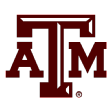
Texas A&M: Only three FBS teams had more early entrants than Texas A&M. Of the Aggies' four underclassmen who declared for the draft, only defensive tackle Justin Madubuike ranks among Kiper's top 10 prospects at his position (No. 4). Wide receivers Kendrick Rogers and Quartney Davis both depart despite a historically deep draft class at receiver. The Aggies also lose cornerback Debione Renfro. There's enough talent left over for Jimbo Fisher entering a 2020 season that has been marked for a breakthrough, but there could have been more.

Washington: Early entries are becoming common for Washington, which isn't a bad thing, as Chris Petersen and his staff recruited and developed well, especially on defense. But the Huskies' offense is hit hard by this year's exit, as starting quarterback Jacob Eason, leading rusher Salvon Ahmed and tight end Hunter Bryant, who had a team-high 825 receiving yards last fall, all depart Montlake. None of the three departures is shocking: Kiper lists Bryant and Eason at No. 3 and No. 4, respectively, for their position groups, and Ahmed had 353 carries in college. But having one stay would have helped, as Washington is going through a lot of transition on offense with new coordinator John Donovan arriving.
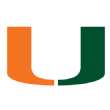
Miami: After a poor finish to the season, Miami loses three underclassmen to the NFL draft. Running back DeeJay Dallas, wide receiver Jeff Thomas and cornerback Trajan Bandy are all unranked in Kiper's position rundowns, but all three could have helped Miami in the fall. Dallas led the Hurricanes with 693 rushing yards and eight touchdowns, and Bandy had a team-high eight passes defended to go along with three sacks, a forced fumble and a fumble recovery. Thomas had a rocky career at Miami but still brings explosiveness to an offense that needs more big plays.
